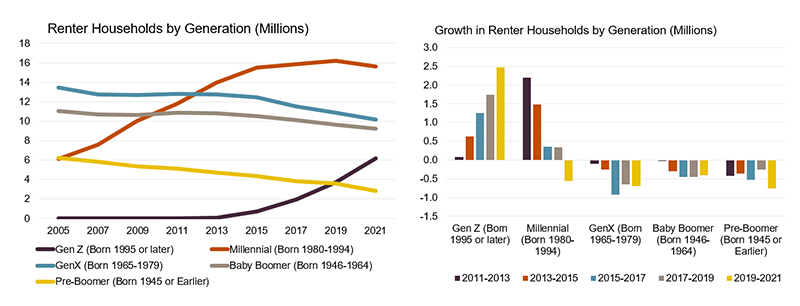Millennials have been a generation of (mostly) renters for the past decade or two. Graduating to adulthood in the 2008 financial crisis, soaring housing prices and economic challenges left them with no alternative. Now, that era is coming to an end.
While it had previously been reported that millennials had shifted from majority renters to majority homeowners earlier in 2023, according to a recent study by the Joint Center for Housing Studies of Harvard University, millennials’ presence in the rental market has peaked. In fact, 2019 – 2021 was the first three-year period since 2011 when the number of millennial renters decreased (by about half a million).
In the same period, Gen Z renters skyrocketed by 2.5 million, making them the only generation that saw growth in renter households. The question at the heart of the report is whether Zoomers will drive rent growth the same way the previous generation did, with the next 15 years (at the end of which Gen Z will largely be the same age that the oldest millennials are now) being the commonly cited benchmark.

Part of this will come down to whether rental prices continue to rise at levels that are unsustainable for consumers. (Lawrence Yun, chief economist of the National Association of REALTORS®, recently cited rental rates as a culprit behind continuing inflation).
The report, however, focuses primarily on population size as the deciding factor for the market’s future, in keeping with the focus on demographics.
In 2022, there were 66.1 million people aged between 13 – 27 (Gen Z) and 67.8 million people aged 28 – 42 (millennials). While Gen Z is currently smaller than millennials in an absolute sense, the report notes that there are more Zoomers today than there were millennials 15 years ago (there were approximately 64 million people aged 13 – 27 in 2007). The population size differences are small enough for a negligible impact on rent growth.
Read the full study here.












